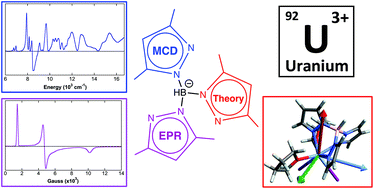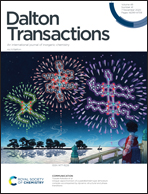Ligand effects on electronic structure and bonding in U(iii) coordination complexes: a combined MCD, EPR and computational study†
Abstract
The trivalent oxidation state of uranium has been shown to undergo unique reactivity, from its ability to activate a variety of small molecules to its role in the catalytic reduction of ethene to ethane amongst others. Central to this unique reactivity and ability to rationally design ligands for isotope separation is the underlying uranium electronic structure. While electronic structure studies of U(IV), U(V), and U(VI) have been extensive, by comparison, analogous studies of more reduced oxidation states such as U(III) remains underdeveloped. Herein we report a combined MCD and EPR spectroscopic approach along with density functional theory and multireference wavefunction calculations to elucidate the effects of ligand perturbation in three uranium(III) Tp* complexes. Overall, the experimental and computational insight suggests that the change in ligand environment across this series of U(III) complexes resulted in only minor perturbations in the uranium electronic structure. This combined approach was also used to redefine the electronic ground state of a U(III) complex with a redox non-innocent Bipy− ligand. Overall, these studies demonstrate the efficacy of the combined experimental and theoretical approach towards evaluating electronic structure and bonding in U(III) complexes and provide important insight into the challenges in altering ligand environments to modify bonding and reactivity in uranium coordination chemistry.



 Please wait while we load your content...
Please wait while we load your content...